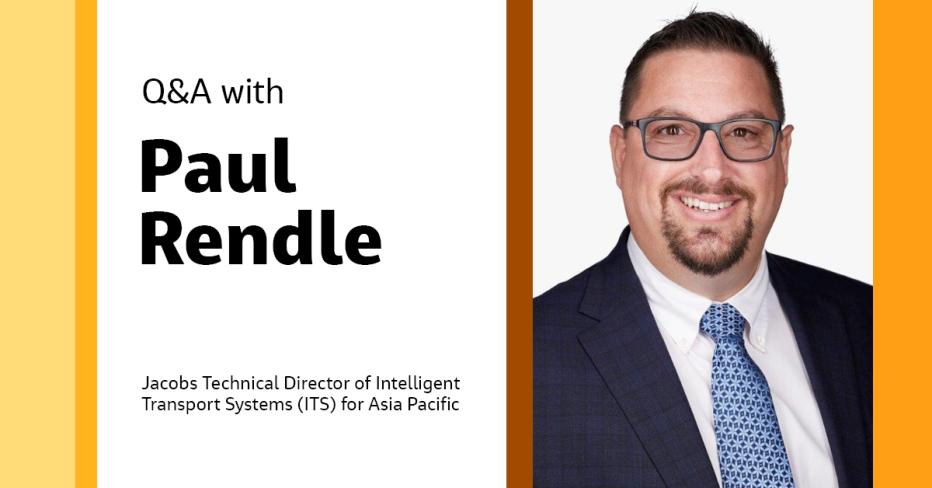
We’re living in the era of digital disruption and we need bold digital and technology leadership now more than ever before. Leading this change demands knowledge, imagination, new thinking, an appetite to reinvent and the courage to challenge conventions.
In this series, we're celebrating our team of digital and technology experts and visionaries, spearheading the development and delivery of our technology-forward solutions for smarter working, and better living in Asia Pacific and the Middle East.
For this feature, we caught up with Paul Rendle, our technical director of intelligent transport systems (ITS) for the Asia Pacific (APAC) region, to understand how ITS helps solve complex mobility challenges amidst the surging population and growth of megacities across the world while unlocking new frontiers in future transportation.
Let's get to know Paul:
Hi Paul! Tell us a bit about your career background and role at Jacobs.
I started working in Intelligent Transport Systems when I was 16 in the United Kingdom, and did an apprenticeship with the Southwest region motorway maintenance contractor. My career quickly grew from there. I spent the next nine years working as an engineer servicing and maintaining ITS equipment, including the cameras at the top of the Severn Bridge, which linked the motorway between the U.K. and Wales. In 2005, I was offered an opportunity to become the ITS Project Engineer in New Zealand for a major junction upgrade project, which was meant to be a two-year project where I would return to the U.K. soon after.
I remained in New Zealand to carry on working on Auckland and Wellington ITS projects. In 2011, I was offered the opportunity to join SKM (later becoming Jacobs) in Brisbane and become the local ITS lead. At that time, there were no other ITS engineers in the Brisbane office, and I got the opportunity to join the team and build the ITS business. It wasn't long before we had another engineer join the team, and we started working on some great projects, including a Lite Rail and Busway project. I have been lucky enough to have been able to work on projects across Australia and secondments to our client's offices to work on developing ITS requirements. Today, 10 years later, we have one of the largest dedicated ITS teams in the region. As the technical director, my role has allowed me to contribute to our strategy, work on the team's growth with our section and team leads, and mentor the engineers. In Queensland, I also undertake design lead roles on our smart motorway projects and have been lucky enough to work on some great projects in the region, including three stages of the Pacific Motorway Upgrade Eight Mile Plains to Daisy Hill program.
What sparked your interest in pursuing a career in this field?
It was by chance that I ended up working in ITS. I was studying electrical and electronics. My lecturer approached me to be put forward as an audio-visual apprentice for Serco, repairing TVs and video players from the local schools. When I started with them, they needed another resource to help install the new camera system in the southwest of the U.K. Within six months, I was no longer the apprentice but an assistant technician working on the side of the motorway, the day after I passed my driving test, I was given the keys to a van and sent out on the road. Since then, I have been hooked on ITS and have worked in the discipline.
The surging population and growth of megacities are driving the deployment of intelligent transportation systems worldwide. How will it transform the future of transport and mobility?
When I started in the industry, ITS was the add-on or last thing that most projects would include in the scope. It was also the first thing that would get cut when budgets ran out. Now ITS is driving our major road projects. With the deployment of smart motorways on our roads, the ITS deployment leads the projects to get the operational outcome road operators need – to manage the ever-increasing transport demands. With the inclusion of autonomous vehicles on our roads, and technology being fitted in cars, ITS will continue to play a part in the future. Roadside technology will inform these vehicles of road hazards ahead, speed changes, queuing vehicles and red-light warnings at signalized intersections.
“With the deployment of Smart Motorways on our roads, the ITS deployment leads the projects to get the operational outcome road operators need - to manage the ever-increasing transport demands. With the inclusion of autonomous vehicles on our roads, and technology being fitted in cars, ITS will continue to play a part in the future. Roadside technology will inform these vehicles of road hazards ahead, speed changes, queuing vehicles, and red-light warnings at signalized intersections.”
Tell us about a memorable project you’ve been involved in and why it’s special to you.
I’ve got three projects that I have worked on, but they are all linked to becoming one project for ITS, which is the Pacific Motorway: Eight Mile Plains to Daisy Hill upgrade here in Brisbane, where Jacobs has delivered the detailed design for the M1/M3 Gateway merge, Sports Drive to Gateway Motorway upgrade and Watland Street to Sports Drive upgrade. I was the ITS Design Lead for all three projects and have been able to work with a great team on all of them, and I have also been able to see them being constructed. Two of the three have now been completed, and the third is well underway. My kids know I work in transport technology and when we drive along that section of the M1 and see the signs flashing and messages being displayed – I get to tell them I worked on that!
You received a grant through Jacobs’ Giving & Volunteering Program, Collectively℠ to support an Assistance Dog puppy through its two-year training program with Assistance Dogs Australia. How has the experience been, and what is your key takeaway from it?
We have recently celebrated Ace’s first birthday, and the whole experience has been incredible. The support from the company around the globe blew me away. Everyone follows his story and wants to know what he is up to, and I have been lucky enough to meet him and train with him. Knowing that an Assistance Dog that we sponsored will be working with a family in just over a year is brilliant. Jacobs’ values really do mean something, and we are a company that cares, and when we say we live inclusion, we mean it.
What are you most passionate about, and what’s the favorite part of your role?
I am passionate about the future of ITS and where we are heading. Will we be installing gantries with lane control signs on them in the future? Will we need to provide messages to motorists in the future, or will it all be on the screen in your car? I get to mentor future leaders in my role, and I also get to look at the innovations and see where we can go next within Jacobs for ITS delivery.
Your proudest moment at Jacobs…
That’s got to be getting the Collectively℠ grant approved, doing the launch and puppy naming competition, and being part of the International Day of People with Disabilities event in 2021. Another proud moment was being the bid lead on a major ITS tender in Cairns and being the Project Director for the detailed design delivery. I got to work with an incredible team during the tender stage, through the delivery, and it will be memorable for all of us involved.
People would be surprised to know that …
I needed something to do during the lockdown periods over the last couple of years when I couldn't get out on my kayak to relax. I started a woodwork project and built a two-seater garden bench, and I enjoyed doing that so much that I pushed it a bit further and built a glider chair for the garden as well. Now, my wife has asked me to make a couple of sun loungers to go next to the pool!
-
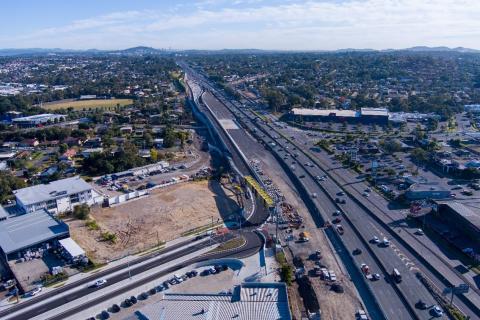
Pacific Motorway (M1): Watland Street to Sports Drive upgrade
-
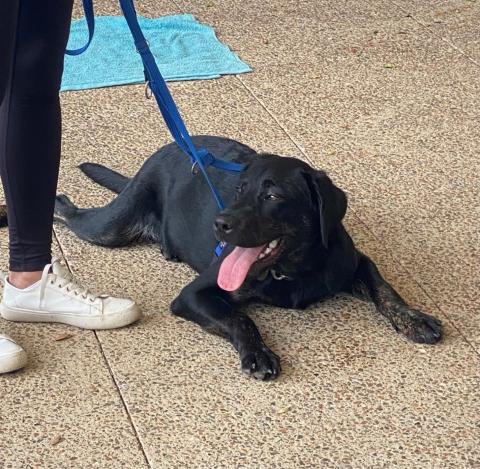
Ace, the Assistance Dog sponsored through its two-year training program by Jacobs
-
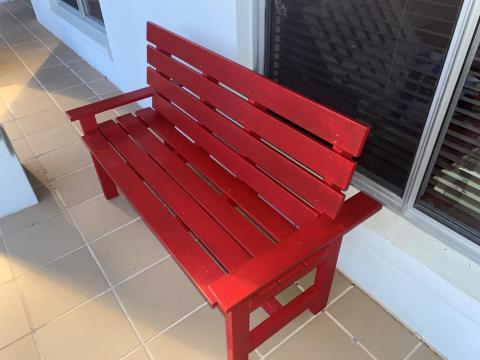
Paul's lockdown woodwork project - a two-seater garden bench
About the interviewee

Paul Rendle has been working in the ITS industry for over 26 years, in a career that has taken him from the U.K. to New Zealand and Australia. He specializes in smart/managed motorway technology deployment and has led design teams for the deployment of these technologies and acting in advisory roles for our clients. Paul is a champion for using innovative digital design tools to deliver our projects and for inclusion in the workplace.
You might be interested in...
-
 News
NewsJacobs Acquires Mobility Analytics Leader StreetLight Data, Inc
Jacobs announced today it has acquired StreetLight Data, Inc. ("StreetLight"), a pioneer of mobility analytics who uses its vast data and machine learning resources to shed light on mobility, enabling users to solve complex transportation problems. The addition of StreetLight accelerates Jacobs' strategy in growing its end-to-end digital solutions portfolio and focus on ESG, while adding high growth, highly recurring revenue software businesses that offer tremendous value for its clients and the communities they serve.
-

 News
NewsSupporting a New Jacobs Assistance Dog in Australia with our Giving & Volunteering Program, Collectively
We connected with Paul Rendle, Technical Director - Intelligent Transport Systems in the Asia Pacific region, to find out about the Jacobs Assistance Dog being supported by a grant from our Giving & Volunteering Program, Collectively℠.
-
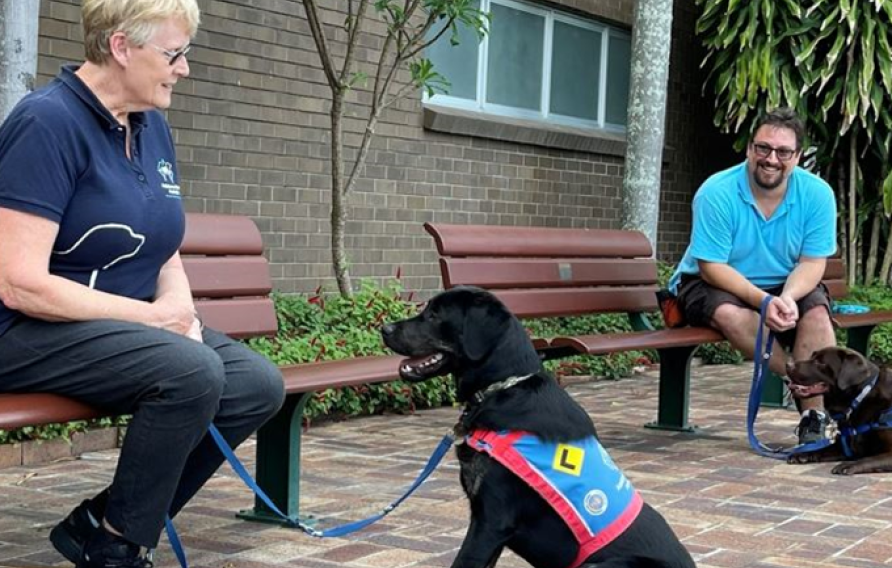
 News
News1 is fun: Jacobs-sponsored assistance dog celebrates his first birthday
In this Q&A, Paul Rendle shares highlights from our Jacobs-sponsored Assistance Dog ’s first year of duty and talks about how our giving and volunteering program, Collectively, made this initiative possible.
-

 News
NewsLiving Inclusion: Celebrating International Day of Persons with Disabilities
In honor of the United Nations’ International Day of Persons with Disabilities, we’re reflecting on Jacobs’ achievements – including joining the #PurpleLightUp initiative and hitting new milestones with our ACE employee network – and the path ahead for disability inclusion in this article.













































